Over the five or six hours it takes to play To a T, I’ve had a series of revelations that in turn built to one giant revelation: I have had the wrong idea about pretty much everything here. As a result, I’ve never played a game where I spent so much of the time simply trying to work out what it’s doing. What’s the intent, To a T? What do you want to be? It turns out I wouldn’t truly understand any of this until the final credits had rolled. In fact, I’m still thinking about a lot of it. Either way, what follows isn’t a review so much as a journey – and I’m afraid it probably contains things you might not want spoiled. Be warned.
To a T is the latest game from Katamari Damacy creator Keita Takahashi. Katamari is a good starting point, because it’s probably the moment I started to go wrong here. Katamari’s all about being a strange little fellow who pushes a big ball around, and the ball is sticky and picks up all the stuff it rolls over. You start off picking up paperclips, and by the end you’re rolling up entire continents. When Katamari came out, people found it unclassifiable, but one thing everyone could agree on was that it felt incredibly good to play. Rolling that ball, picking stuff up, it was a sensory delight.
So after ten minutes of To a T, I was like: oh, this is the inverse Katamari. The game seemed deeply classifiable, and yet nothing felt very good. (When I say nothing felt very good I mean the game moves slowly and with many interruptions and the camera needs constant adjustments.) Strange choice, but these are strange times! Toot toot! My journey into wrongness had begun.
To a T is a game about a kid named Teen who is stuck in a permanent T-pose, with their arms held out to each side. Over the course of each day we guide T through washing and having cereal and cleaning their teeth, all of which are made new again by the challenges of that T-pose, and then we head off to school or to explore a little town, while a wider story unfolds. Fine, I decided. This is a narrative game with open-world elements – the town is laid out for you from the start. And it’s also deeply concerned with the experience of disability. Teen’s T-pose is a way of exploring what it’s like to live in a world that isn’t made for you and your needs. Onwards.
For a while, all of this held up. The story unfolded. I took Teen to school and we had lessons, which played out like very simple mini-games. Solve the maths problem. Match the inputs in gym class. Tilt various beakers and test tubes in science – what do you make? Teen’s bullied for being different, and the world is constantly reminding you how difficult it is to navigate things when you’re different in any way. You have to turn to fit Teen through doors. They need special taps and special toothbrushes and spoons and pencils.
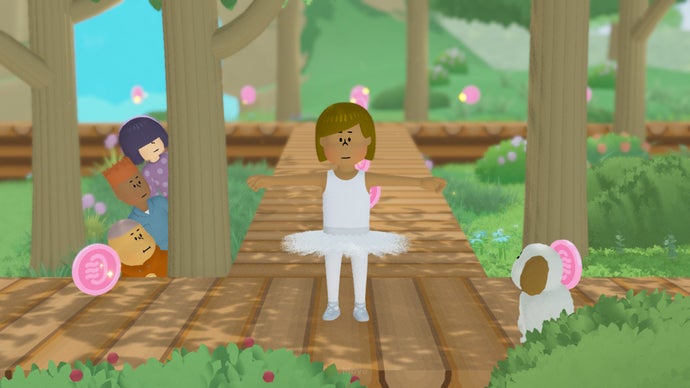

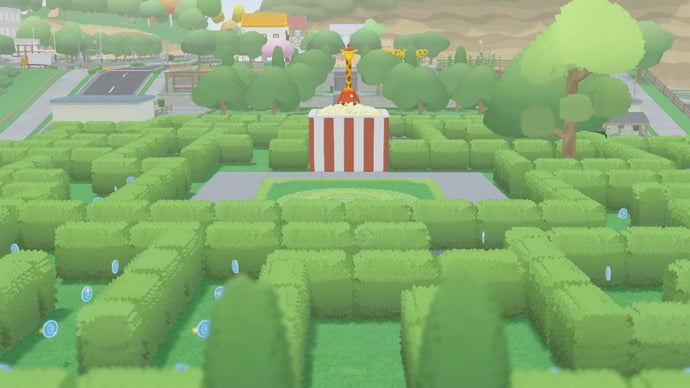
Let’s slow down here, just a little. At its most forensic, To a T handles this stuff in a really interesting manner. Take Teen’s morning routine, which plays out every in-game day if you want it to. You’re in the bathroom faced with a toothbrush, or you’re in the kitchen with a cereal bowl and spoon. What do you do? Move the arm or the body with the stick, move the hands with the bumpers: this is a way of slowing down movements, breaking them into their component parts and giving each part its own weight and thought and consequence. It makes you think about what you’re doing in each moment. It makes you plan things that you might think are second nature.
If you’ve had even the most temporary of impairments from a sprain, say, or even an awkward papercut on a thumb, you’ll know what it feels like to workshop seemingly basic physical processes like this – and you’ll know what it’s like to realise there’s nothing basic at all about most of them in the first place. The perverse and difficult experience of impairment results in a deeper, and perhaps richer, understanding of the various parts of daily life. Not for nothing did Michael J. Fox say of his own Parkinson’s disease that it was “the gift that keeps on taking.”
There are some lovely elements of this in To a T. More than anything else in the game, I love the way Teen closes doors after they’ve moved through them, catching the door and sending it home with a practised hook of the back of the foot as they realign their upper body. It’s a perfect bit of animation, and it’s perfect because it captures so much human experience. Years of working out how to move through a tricky landscape. Years and years of adapting and accommodating.
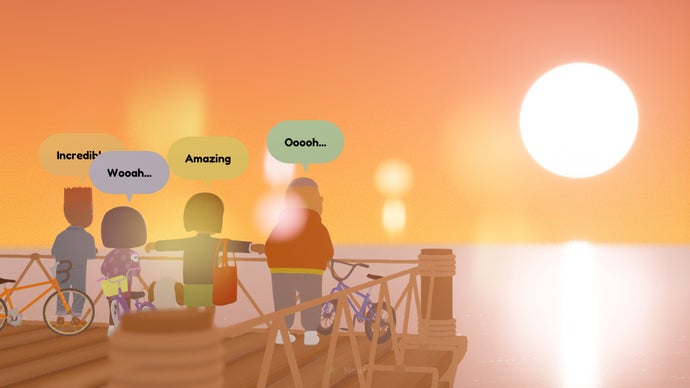
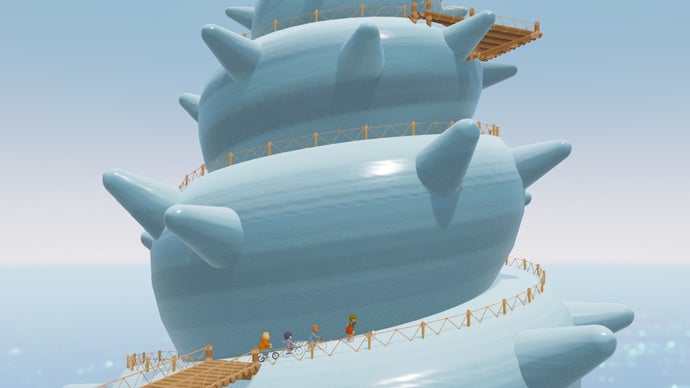
In truth, though, this stuff is just one part of a wild mix of ideas, some good and bad, many of which tie into a broader theme about individuality. To a T is interested in disability, but it’s really interested in conformity, and this plays out across the game in ways large and small. It’s timely, I guess. In 2025, we probably do need to be reexamining the forces acting upon us on that want to push us to conform. But this recalibrating of message feels like it comes at a price, for me at least. It feels like the game has traded the chance to really look at something quite specific and under-examined, in favour of saying something fairly broad and familiar.
Whatever the ultimate message, any single element of this knockabout game is soon competing for your attention with other things. What kind of things? Those mini-game school lessons, some surprisingly cataclysmic interruptions to school lessons, city-wide conspiracies, the editorial staff of a very unusual newspaper, mysterious espressos, buried family history and at least one attempt to pit humans against trains. Oh yes, and a whole bit about possibly learning to fly. I’m jumbling this up here because the game jumbles it up. A lot of the time, the most compelling thing to do in To a T is unjumble its many elements in your head.
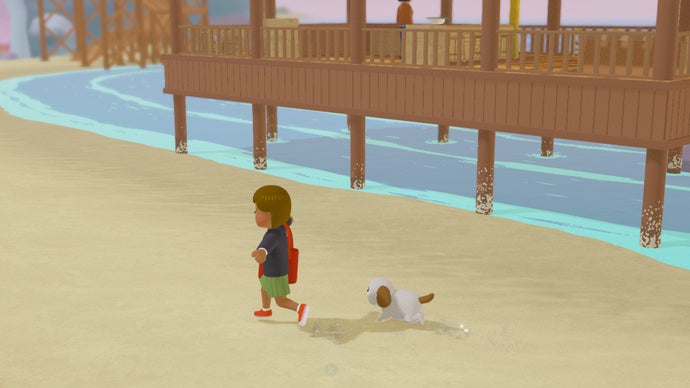
This, I should say, is a sub-optimal way to play, and I own that. This overthinking just leads you down corkscrew paths of inquiry that aren’t ultimately that interesting. Example. Is the camera system awkward because the game’s trying to do something difficult, or because it wasn’t a priority for the team, or because it’s a riff on bad cameras in other 3D games? It’s better, I think, to put that aside and focus on what the camera system is good at.
And this in turn is weird anyway. The camera system is particularly good at giving you a lateral tracking view of the world, often at child height, of the kind you used to see in Peanuts comic strips, where it was all low fences and stubby grass and the sides of dog-houses. Is To a T interested in the way a child sees the world? Now we might be getting somewhere.
But is this viewpoint good for navigating an open world? No. It’s quite bad for that. You can’t see what’s coming, the background blows out so you can’t navigate by landmarks, and cross-sections seen from such a fixed angle either disappear into or away from the screen. But maybe that’s good news, because the world of To a T isn’t actually an open world in any meaningful sense anyway. Most of the time, there’s no real reason to pick a point and head for it, and no reward for exploring – in the moments you’re allowed to explore – except for a few coins and a few new shops.
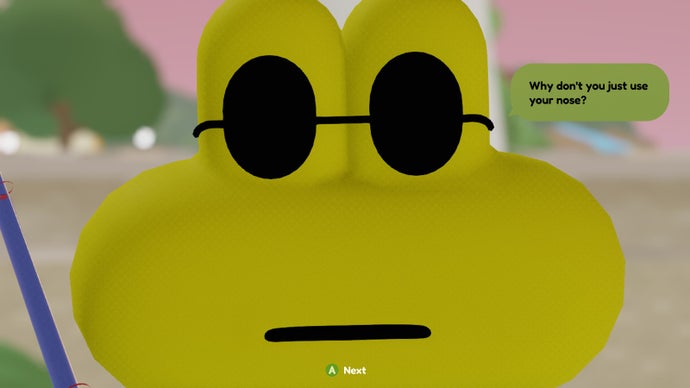
It took me ages to make sense of the game on this wider scale, and then I finally realised something. More wrong thinking revealed. This is less of an open-world game, and more of a linear game that has just arranged all its pieces in a fixed 3D space. It has made a town of its main story.
Written down in that way, that’s an idea I can get behind, and I can get behind it quite often in the game. To a T’s a little awkward to get around, but its town is filled with interesting people to meet, and as the game unfolds it’s the people rather than the mechanics who truly bring the whole thing to life. The science teacher who keeps choosing the wrong time to ask people out. The giraffe who makes sandwiches. That newspaper I mentioned and their unique approach to staffing. Every few minutes someone says something interesting or expresses a thought in a unique way, and as the story gets wilder, there’s a sense of the design team getting into their groove. That open world stuff was a distraction. Those mini-games were a distraction. You can almost feel the game dropping parts of its design that it’s become bored with as the story comes into focus – this is a neat trick – by becoming stranger and stranger, and yet more human with it.
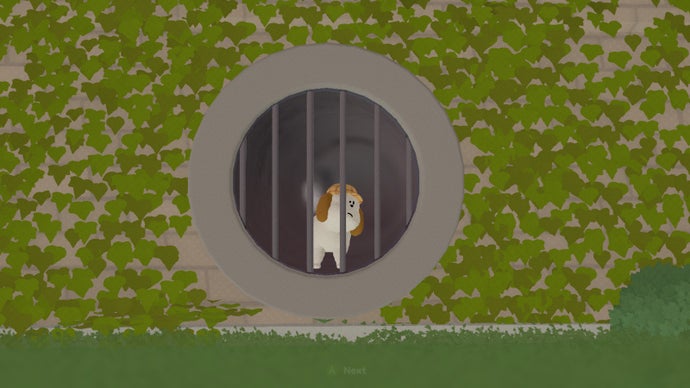
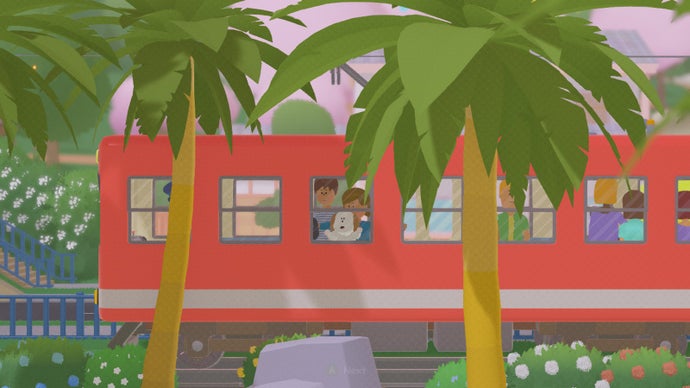
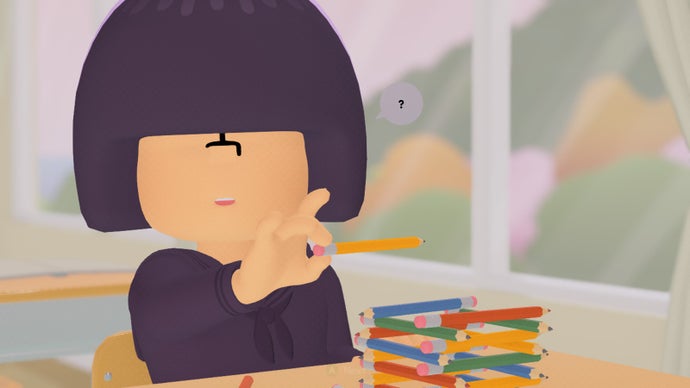
Now I’ve experienced all this, worked through each day’s freight of ritual and revelation, met all the people, visited the shops, prodded through those mini-game lessons and come out the other side, I’m tempted to think that To a T is actually very clever and coherent, and almost a kind of prank at the same time. In making a game about the forces that surround us and seem to want to make us conform, in making a game about how important it can be to fight those urges and find your own place in the world, To a T has gone on its own journey as a piece of design. It’s tried to be a traditional narrative game. It’s tried to have open world elements and collectibles and mini-games. But ultimately, it springs back in its own singular shape. It doesn’t suffer from feature creep so much as a kind of feature drift. And in drifting like this, it’s a reminder that even the most seemingly ordinary of games will have its own quirks and its own little glimpses of personality that take it away from the Platonic standards. If To a T is ultimately trying to say there’s no such thing as normal, I am here for it.
That’s great, sure, but that’s also a little high-level isn’t it? Let’s come back to that awkward camera to bring things home. What ultimately worked for me about To a T, about this frustrating, bewildering, clumsy and ingenious game – and I see this in glimpses, and in little starbursts of my own triggered memories – is its abiding sense of just how luridly weird life is when you’re young, how boundless and loosely-ruled it seems. The structure of morning-til-evening that can seem to halt narrative momentum at first may actually be the game’s masterstroke.
Why? Because at the end of the day, you collapse into bed, mind a whirl from all that improbable stuff that happened to Teen in just a single twelve hour stretch. And the next day, you get up and you realise you have no idea what’s in store for you.
Code for To a T was provided by the publisher.
